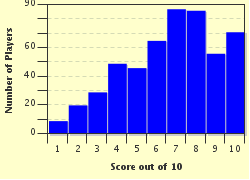Quiz Answer Key and Fun Facts
1. As Doublemm enters the lab for his second year assessment, the examiner asks him to first fetch a pipette. Doublemm knows he has heard this word before, but can't get the image of a pipistrelle out of his head.
Help Doublemm out by choosing the most appropriate descriptive definition of a pipette.
2. Next, the examiner asks Doublemm to measure out 250 microlitres of distilled water. "Uh, oh", thinks Doublemm - he's more used to dealing in pints.
What volume is Doublemm being asked to measure out?
3. Doublemm realises that he will be working with cell cultures as he is shown a small dish with a lawn of yeast cells growing on top of a gel-like substance. What is this gel-like substance most likely to be?
4. Before the yeast cells can be transferred into a vessel in order to be grown on a large scale, the vessel, the examiner tells Doublemm, must be autoclaved. Noticing the vacant expression on Doublemm's face, the examiner puts the budding scientist under pressure by asking him to explain this term.
Help Doublemm with this quandary - what is autoclaving?
5. Pipetting and autoclaving done, Doublemm is asked by the examiner to inoculate the vessel. You stop Doublemm as he approaches the 20 litre container with a syringe containing a vaccine.
What is Doublemm actually being asked to do?
6. The examiner tells Doublemm that to monitor the cell growth of the yeast, a sample must be collected and he must measure the OD. "Channel 4 OD?", Doublemm thinks. However, the examiner is not referring to the popular video sharing site. What, in this instance, does OD stand for?
7. Rather surprised that Doublemm has made it this far, the examiner asks him to induce the media by adding the appropriate solution to induce the expression of the yeast's genes which are under the control of the Gal4p promoter. Understandably thrown by the technological language, Doublemm searches his brain for which of the solutions in front of him should be added to the yeast culture. What would be the best choice?
8. Doublemm gets the evening off while his yeast culture grows overnight, and decides to cram all the information he can about the humble S. cerevisiae. Bright and early the next morning, the examiner announces that the cells will be harvested by spinning the samples down using a high speed rotor which generates forces several thousand times the force of gravity. Which piece of lab equipment is Doublemm most likely to use to do this?
9. Now that the cells have been isolated, they can be broken open and the desired protein can be purified. The examiner tells Doublemm that the protein has a built-in histidine tail at its ends which allows it to be purified using a certain technique. Doublemm twitches as he sees this next question coming. Can you help him out? Which of the following pieces of equipment will be most helpful to Doublemm in purifying a protein with a poly-histidine tail?
10. As it nears the end of the lab examination, the smell from the fermenter, likened to freshly baked bread and a pub at last orders, fills the air. The examiner points to a tub of pink powder and instructs Doublemm to clean up after himself. This pink powder, known as Virkon, is an important part of any experiment which deals with live cells. What role does Virkon play?
Source: Author
doublemm
This quiz was reviewed by FunTrivia editor
CellarDoor before going online.
Any errors found in FunTrivia content are routinely corrected through our feedback system.

